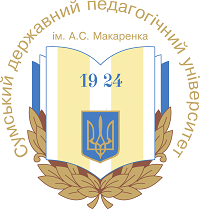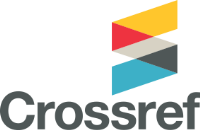PHYSICAL PERFORMANCE OF ATHLETES: CONCEPT AND KEY FACTORS OF DEFINITION
DOI:
https://doi.org/10.32782/olimpspu/2025.1.22Keywords:
athletics, work capacity, phases of work capacity, factors of determining work capacityAbstract
The article deals with the concept of the physical performance of athletes, which is an important criterion for the effectiveness of their sports activities. According to the predominant contribution of different pathways of ATP resynthesis, physical performance is differentiated into three types: aerobic, anaerobic, and physical performance with a mixed type of energy supply. In the process of sports activity, performance is determined by the influence of various external and internal factors, which are divided into the following groups: maximum amount of energy exchange; coordination of the muscular apparatus, nervous and endocrine systems; psychological component: will, motivation, self-control, emotional stability and ability to concentrate; social component: conditions of training places, living conditions, nutrition, etc.The key factors that determine physical performance are analysed, including the level of physical condition, functional state of the body, energy potential, technical skills, psychological readiness and external conditions. Physical performance is formed by the interaction of these factors, which affect the ability of athletes to perform prolonged and intense physical activity.The dynamics of work capacity are characterised by the following phases: the phase of mobilisation, the phase of the organism's involvement in work, the phase of hypercompensation, the phase of optimal work capacity, the phase of subcompensation, the phase of decompensation, and the phase of failure (fatigue). The duration and severity of these phases depend on many factors (age, nature of work, organisation of activity, type of higher nervous activity, experience of sports activity, motivation, etc.).All methods of studying direct indicators of athletes' performance are divided into quantitative (metres, seconds, kilograms, points, etc.), qualitative (reliability and accuracy of specific physical exercises) and combined (along with performance, the reliability and accuracy of sports activities are assessed). Indirect performance criteria include various clinical, physiological, biochemical and psychophysiological indicators that characterise changes in body functions during work.The study of physical performance in the training of athletes allows to optimise the training process, improve sports performance and reduce the risk of injury.
References
Босенко А. І., Орлик Н. А., Топчій М. С. Фізіологія спорту : навч. посіб. Одеса : видавець Букаєв Вадим Вікторович, 2017. 68 с.
Дегтяренко Т.В., Долгієр Є.В. Медико-педагогічний контроль у фізичному вихованні та спорті : Підручник для студентів вищих навчальних закладів. Атлант ВОІ СОІУ, Одеса. 2018. 282 с.
Єднак В. Легка атлетика. (частина ІІ). Навчально-методичний посібник для студентів І курсу факультету фізичного виховання. Тернопіль: ТНПУ, 2018. 109 с.
Кудряшова Т.І., Губченко О.О. Теорія і методика викладання легкої атлетики. Кременчук : ПП «Бітарт», 2019. 169 с.
Павленко І.О., Сидоренко О. Р., Скачедуб Н. М., Бережна Л.І. Легка атлетика у фізичному вихованні педагогічних закладів вищої освіти : навч.-метод. посіб. Суми : ФОП Цьома С.П., 2020. 200 с.
Спортивна медицина : підруч. для студ. закл. вищої освіти фіз. виховання і спорту / Шахліна Л.Я. та ін. ; за ред. Шахліної Л.Я. К.: Національний університет фізичного виховання та спорту України, Олімпійська література, 2018. 424 с.
Ши Лей Стимуляція роботоздатності кваліфікованих легкоатлетів у бігу на 400 метрів у змагальному періоді підготовки позатренувальними засобами : автореф. дис. канд. наук із фіз. вих. та спорту : 24.00.01. Київ, 2017. 21 с.







